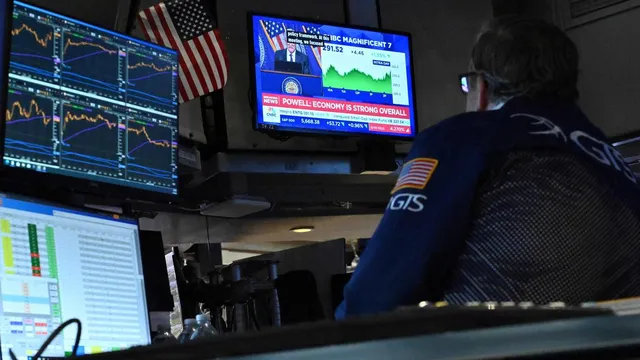
Federal Reserve plans interest rate cuts amid economic uncertainty
2025-03-22 00:00- The Federal Reserve is expected to indicate potential interest rate cuts this year due to economic uncertainty.
- Economic growth has slowed down as consumer sentiment declines amid fears of rising inflation.
- Increased tariffs and uncertainty have created challenges for the Federal Reserve as they decide on monetary policy.
Express your sentiment!
Insights
On Wednesday, March 19, 2025, the Federal Reserve is set to announce its first interest rate decision since the implementation of President Donald Trump's economic policies. This decision arrives as uncertainty looms over the economy due to widespread tariffs and government spending cuts that have raised concerns among consumers and businesses alike. Recently, Federal Reserve Chair Jerome Powell indicated that the central bank is in a cautious wait-and-see mode to assess the impact of these policies. Following three rate cuts last year, economists predict two more reductions this year due to faltering consumer sentiment and inflation remaining above target rates. The Fed's quarterly projections suggest a more subdued economic growth forecast, with analysts warning of rising inflation, particularly due to tariffs. In the past months, consumer sentiment has declined sharply, and many small business owners express uncertainty about the economic outlook, prompting concerns over hiring and investment. As a result of these factors, retail sales figures, while modestly improving, still reflect cautious spending behavior from consumers, many of whom anticipate higher prices. Potential rate cuts may provide a temporary boost to the economy by making borrowing cheaper for consumers and businesses; however, such cuts could also accelerate inflation. Key market players are closely monitoring Powell's press conference following the announcement, eager for insights into how the Fed intends to navigate these complicated economic conditions. Investors could respond strongly based on the forecasts provided for interest rates and inflation, indicating their expectations for future market performance. In this atmosphere of uncertainty, Wall Street has experienced notable fluctuations, driven by concerns about Trump's trade policies and their long-term consequences on the economy. The S&P 500 index recently tumbled into correction territory as fears mount over a slowing economy. Amid rising unemployment and inflation, the Fed faces a difficult challenge as it attempts to balance economic growth while containing inflationary pressures. Some analysts argue that inaction could further complicate the economic landscape, as falling interest rates may embolden the administration to implement more aggressive economic measures.
Contexts
The current Federal Reserve policies are centered around managing inflation, supporting employment, and ensuring the stability of the financial system in the U.S. In recent years, the Federal Reserve has implemented a variety of monetary policy tools, including interest rate adjustments and quantitative easing, to respond to evolving economic conditions. As of March 2025, the Federal Reserve has been facing challenges, particularly in regard to inflation rates that have remained persistently high. This scenario has prompted the Federal Open Market Committee (FOMC) to assess the effectiveness of their past policies and consider adjustments to their strategy in light of current economic indicators. As the U.S. economy grapples with high inflation, the Federal Reserve has been incrementally raising interest rates to cool down demand and curb inflationary pressures. This strategy aims to strike a balance between controlling rising prices while avoiding stifling economic growth. The Fed's decision-making has been influenced by a variety of factors, including labor market conditions, consumer spending behavior, and global economic trends. With employment rates recovering and consumer confidence improving, the Fed must carefully navigate the complexities of these dynamics to maintain economic stability without triggering a recession. The economic outlook for the coming months is contingent upon several key variables, including inflation trends, supply chain developments, and fiscal policies enacted by the government. Inflation, although a primary concern, has shown signs of moderating in some sectors, leading to discussions among policymakers about potential adjustments to interest rates in the near future. Additionally, the ongoing geopolitical developments and post-pandemic recovery remain critical considerations for the Federal Reserve as they evaluate the broader economic landscape and its impact on monetary policy. In summary, the Federal Reserve's ongoing efforts to manage current inflationary pressures and foster a robust economic recovery are reflective of a careful balancing act. As policymakers look ahead, they are faced with the challenge of adapting their strategies to ensure sustainable economic growth while navigating the complexities of the domestic and global economic environment. The Federal Reserve's ability to make informed decisions in these uncertain times will be crucial in shaping the economic outlook in the years to come.